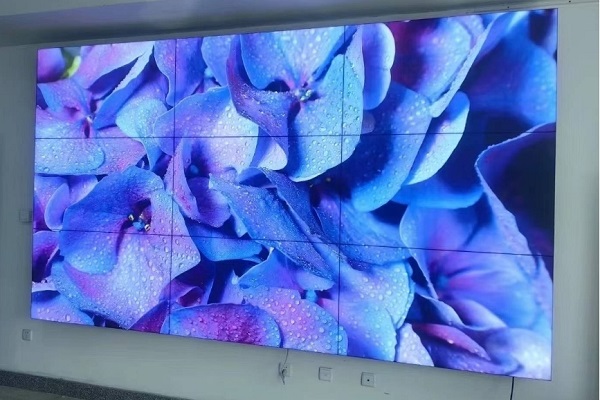LCD Video Wall Installation Steps
As large, highly integrated display devices, the installation process of an LCD video wall is like building a sophisticated "visual center." Every detail directly impacts the subsequent performance, far exceeding the simple placement of ordinary monitors.
1. When selecting an installation site, in addition to ensuring a flat surface, calculating the load-bearing capacity is crucial.
For example, a typical 55-inch LCD video wall weighs approximately 15 kg per screen. If a 3×4 video wall (12 panels) is constructed, along with the metal frame and mounting brackets, the total weight can reach over 250 kg. This requires a floor load-bearing capacity of at least 500 kg/m2. For example, ordinary concrete floors in older office buildings may require pre-reinforcement. Otherwise, long-term use can lead to ground subsidence, resulting in larger gaps between screens and even display issues. Furthermore, anti-static flooring is essential. It effectively dissipates static electricity generated during equipment operation, preventing it from damaging delicate internal circuits. In one data center installation, the lack of anti-static flooring caused frequent screen artifacts. After investigation, it was determined that static electricity was interfering with signal transmission. After installing anti-static flooring and grounding, the problem completely resolved.
2. The standardization of cabling is directly related to the stability of image transmission.
Before LCD video wall wiring, the cable specifications and lengths must be precisely calculated based on the screen size, installation location, and number of monitoring channels. For example, when transmitting 4K HD signals over distances exceeding 5 meters, shielded HDMI 2.1 cables must be used. Otherwise, signal attenuation and image freezes are likely. For transmission distances exceeding 30 meters, a fiber optic transceiver is required. For example, in a monitoring center at a large industrial park, the factory building and command center are 80 meters apart.
3. Ambient light control significantly impacts display quality.
Although LCD video walls generally boast brightness exceeding 450cd/m2, LCD video wall can easily reflect light in environments with strong direct sunlight (such as command centers near floor-to-ceiling windows), blurring image details. A two-pronged approach is recommended: first, installing blackout curtains, such as linen curtains with a 90% light-blocking rate, effectively blocks direct midday sunlight. Second, installing down-type LCD video wall 1.5 meters in front of the screen (select models with a neutral 4000K light output and anti-glare shields) can supplement ambient light without creating glare on the screen. A highway command center used this approach to address the issue of daytime glare that hindered visibility of distant surveillance footage.
These meticulous installation details are ultimately aimed at ensuring the stable performance of LCD video walls in intelligent security and smart city development, ensuring clear, real-time viewing of every surveillance channel, and providing reliable visual support for safe and efficient urban operations.

